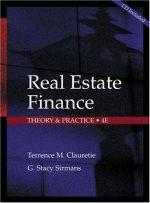Was having difficulty with this practice problem set. Could you please help? Will be sure to leave a review! Thank you so much!


Company Nolev has a tradition of financing all their operations with equity issues. They have no debt in their capital structure. The expected return on their equity is 12%, while the expected return on the stock market as a whole is 14%. The risk free rate of interest is currently 6%. The company's share price is $25, and the company has 20 million shares outstanding. The new management of Nolev has decided to break with the company's tradition and finance 25% of their operations with debt. This would still give the company a AAA credit rating, and the expected return on this debt would equal the risk free rate. The company would issue debt and use all the proceeds to repurchase some of their shares after relevering. a) (4 points) What is the total market capitalization of Nolev? What is the beta of Nolev's equity? (both questions refer to Nolev before relevering). b) (6 points) What is the equity beta after the company has repurchased the shares and issued debt? What is the expected return on equity now? How has this affected the company's cost of capital, that is, its expected return on assets? c) (3 points) The CEO has decided that he wants to change Nolev's cost of equity to 20%. What is the dollar amount of debt the company has to issue? What is the share price after the repurchase? d) (2 points) The CFO has argued that it would be better to reduce the required rate of return on equity to 8%. Can Nolev change its capital structure to achieve this goal? If so explain what capital structure would achieve this if not explain why not. Company Nolev has a tradition of financing all their operations with equity issues. They have no debt in their capital structure. The expected return on their equity is 12%, while the expected return on the stock market as a whole is 14%. The risk free rate of interest is currently 6%. The company's share price is $25, and the company has 20 million shares outstanding. The new management of Nolev has decided to break with the company's tradition and finance 25% of their operations with debt. This would still give the company a AAA credit rating, and the expected return on this debt would equal the risk free rate. The company would issue debt and use all the proceeds to repurchase some of their shares after relevering. a) (4 points) What is the total market capitalization of Nolev? What is the beta of Nolev's equity? (both questions refer to Nolev before relevering). b) (6 points) What is the equity beta after the company has repurchased the shares and issued debt? What is the expected return on equity now? How has this affected the company's cost of capital, that is, its expected return on assets? c) (3 points) The CEO has decided that he wants to change Nolev's cost of equity to 20%. What is the dollar amount of debt the company has to issue? What is the share price after the repurchase? d) (2 points) The CFO has argued that it would be better to reduce the required rate of return on equity to 8%. Can Nolev change its capital structure to achieve this goal? If so explain what capital structure would achieve this if not explain why not








